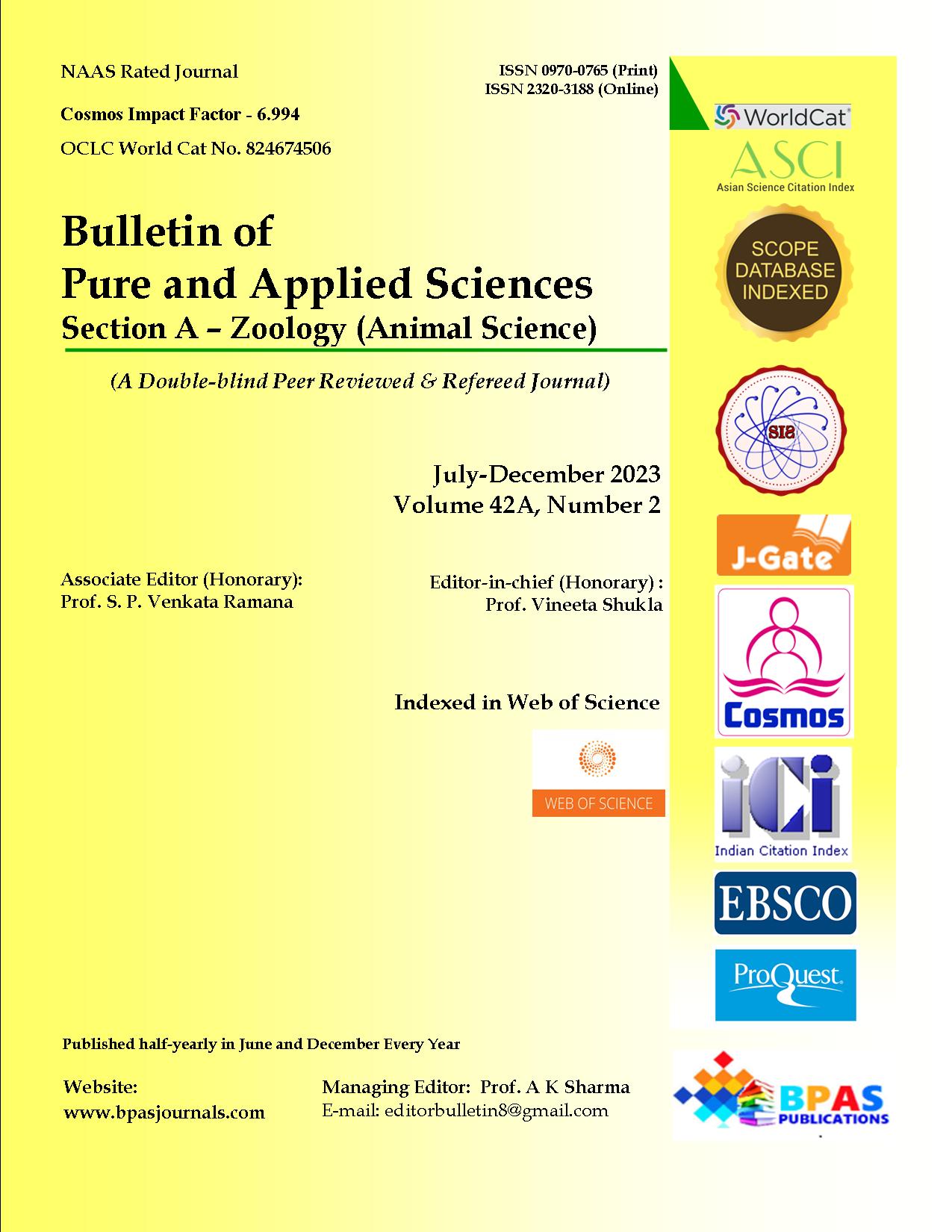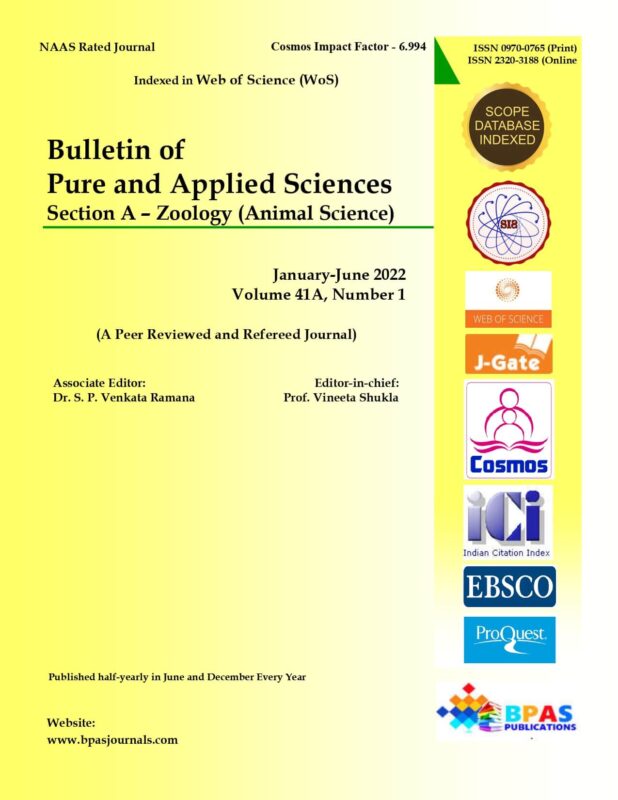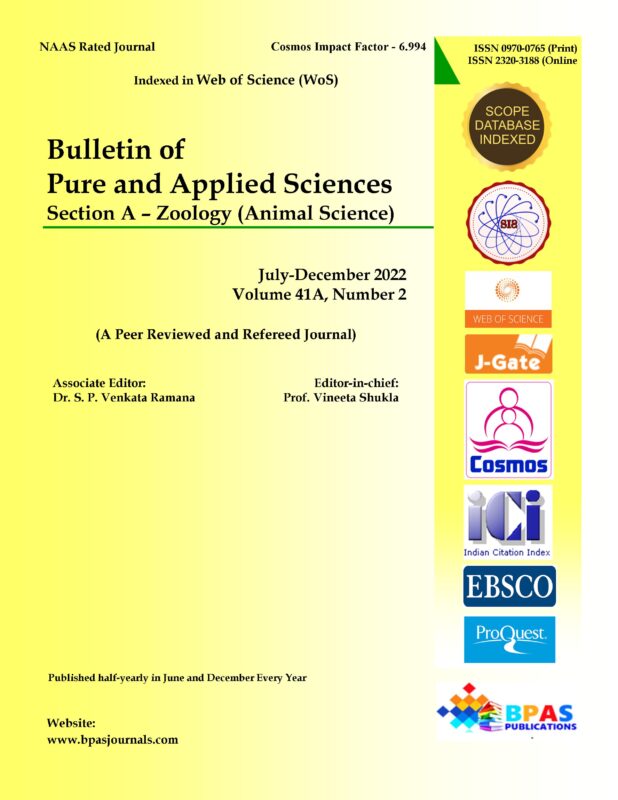Documentation of Avian Species Composition and Assemblage in Agricultural Landscapes of Karnal, Haryana
9.38$
1Amit Kour*, 2Dharambir Singh, 3Kiran, and 4Khushbu
Bulletin of Pure and Applied Sciences
Zoology (Animal Science), Vol.42A, No.2,
July-December 2023: P.270-281
Description
1Amit Kour*, 2Dharambir Singh, 3Kiran, and 4Khushbu
| Author’s Affiliation:
1,3,4Research Scholar, Department of Zoology & Aquaculture, Chaudhary Charan Singh Haryana Agricultural University Hisar, Haryana 125004, India 2Assistant Professor, Department of Zoology & Aquaculture, Chaudhary Charan Singh Haryana Agricultural University, Hisar, Haryana 125004, India
|
| *Corresponding author:
Amit Kour Research Scholar, Department of Zoology & Aquaculture, Chaudhary Charan Singh Haryana Agricultural University Hisar, Haryana 125004, India E-mail: akour625@gmail.com
Article Info: Received on 12.09.2023 Revised on 07.11.2023 Approved on 12.11.2023 Accepted on 28.11.2023 Published on 20.12.2023 |



